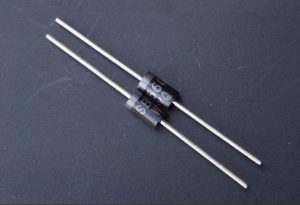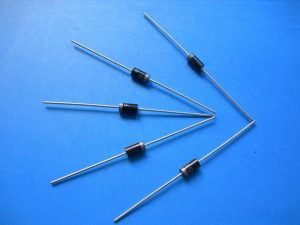Ever wondered how your phone glows or your radio picks up signals? The secret lies in a tiny, but mighty, component called a diode. These unsung heroes of electronics are like one-way streets for electricity, allowing current to flow in just one direction.
This seemingly simple ability unlocks a treasure trove of possibilities! Rectification, converting alternating current (AC) to direct current (DC), is just one of their many talents. Let’s delve into the fascinating world of diodes and see how they power our everyday devices.

Material Matters: Choosing the Right Building Block
The heart of a diode depends on the material it’s made from. Here are the two main players:
- Silicon: The workhorses! Known for handling higher voltages and currents, making them perfect for rectification tasks.
- Germanium: Specialists in delicate jobs, often found in radio detection applications. (Examples: IN4148, OA71)
Cracking the Code: Understanding Diode Languages
Identifying a diode is easy once you understand its code. Here’s how different regions speak the language of diodes:
- Europe (Three Letters):
- First letter: Material (A for Germanium, B for Silicon)
- Second letter: Function (A – General purpose, B – Tuning, Z – Zener, Q – LED)
- Example: BA stands for a silicon tuning diode.
- America (IN + Numbers):
- Simpler system, but doesn’t reveal the function. (Example: IN4001) – Consult the datasheet for details.
Mind Your Manners: Anode vs. Cathode
Think of diodes as tiny security gates with two sides:
- Anode (Positive): The entrance for the current.
- Cathode (Negative): The exit.
The cathode is usually marked with a colored band to help you identify the correct direction for current flow. Incorrect flow? No entry allowed!
Choosing the Right Rectifier: Understanding Peak Inverse Voltage (PIV)
When it comes to rectification, diodes need to be tough enough to handle the ups and downs of an AC signal. This is where PIV comes in. It represents the maximum reverse voltage a diode can handle. Here are some examples:
- 1N4001 diode: Handles up to 50 Volts
- 1N4007 diode: A powerhouse, tolerates up to 1000 Volts
Beyond Rectification: A Universe of Applications
Diodes are much more than just rectifiers! They offer a whole universe of functionalities:
- Light-Emitting Diodes (LEDs): These fascinating diodes convert electricity into light! LEDs are everywhere, from your phone screen to lighting your home.
- Zener Diodes: Act like tiny voltage regulators, maintaining a steady voltage level even if the incoming voltage fluctuates. They’re crucial components in many electronic circuits.
- Photodiodes: Light can actually control the current flow in these special diodes. They’re used in light detectors, solar cells, and many other applications.、

By venturing into the world of diodes, you’ll unlock a gateway to understanding a vast array of electronic functions and pave the way for exciting explorations in various electronic applications!
